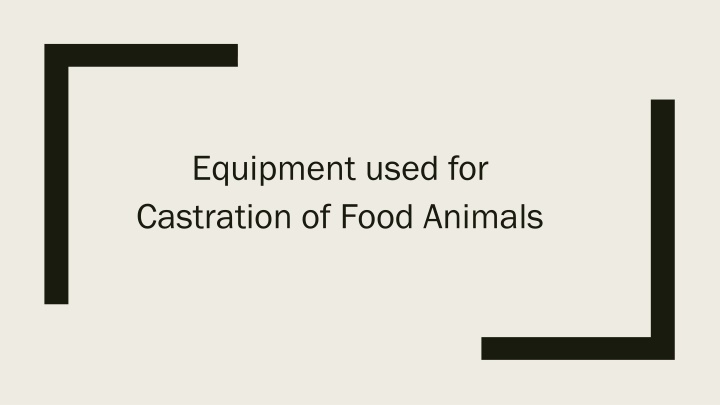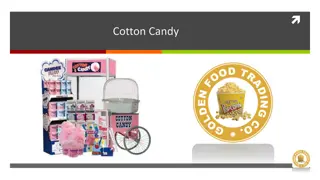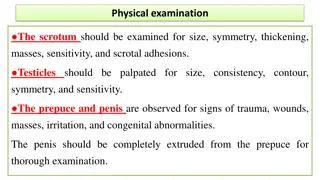Equipment Used for Castration and Testectomy in Food Animals
This informative content illustrates various equipment used for castration and testectomy in food animals. It includes tools like scalpel, castration knife, emasculator, and emasculatome, each serving different purposes in the procedure. The use of these tools ensures efficient and bloodless castration, preventing infection and promoting animal welfare. Elastration equipment is also discussed, offering a method for restricting blood supply to achieve scrotal and testicular atrophy in young and older animals.
Download Presentation

Please find below an Image/Link to download the presentation.
The content on the website is provided AS IS for your information and personal use only. It may not be sold, licensed, or shared on other websites without obtaining consent from the author.If you encounter any issues during the download, it is possible that the publisher has removed the file from their server.
You are allowed to download the files provided on this website for personal or commercial use, subject to the condition that they are used lawfully. All files are the property of their respective owners.
The content on the website is provided AS IS for your information and personal use only. It may not be sold, licensed, or shared on other websites without obtaining consent from the author.
E N D
Presentation Transcript
Equipment used for Castration of Food Animals
Equipment used for TESTECTOMY 1.) Scalpel or Castration Knife No.12 Bard Parker blade is often preferred and used for Testectomy in cattle
2.) New Berry Castration Knife Used to make incisions in the scrotom of young bulls Technique: Close knife and pull downward to slice scrotom
3.) Emasculator - Used to simultaneously crush and cut the spermatic cord Prevents hemorrhage Blade is located on the side of the tool held in place of a nut Placed against the testicle in a nut to nut way to allow crushing or the spermatic artery Can be locked in place using the ratchet to allow hemostasis - - - -
Use of the Emasculatome - - - Used for Bloodless castration Eliminates the potential for infection Commonly used on young bulls and rams (immature males) NOT recommended for use on boars. - - Crushes the vasculature of the spermatic cord to result in avascular necrosis and atrophy of the testicle
Equipment used for Elastration Elastrator bands and Application pliers - Bands are placed at the base of the scrotum, above the testicles - Application allows restriction of blood supply to testicles and scrotom that results in scrotal and testicular atrophy - Bands should be replaced often to prevent deterioration and loss of elasticity - Used for young lambs and calves less than 2 weeks old as well as older bulls and ram lambs























